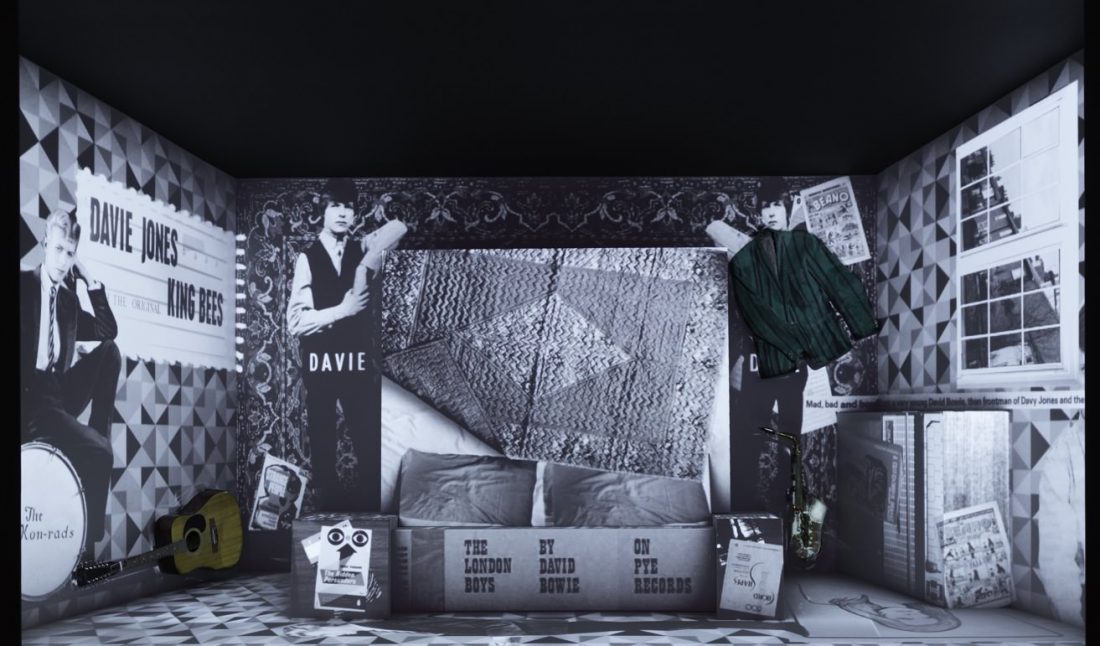David Bowie—the extraordinary and consistently reinvented persona created by David Robert Jones—and his creative process, influences, and massive eclectic output are the subject of the exhibition “David Bowie Is,” organized by the Victoria and Albert Museum and now on view at the Museum of Contemporary Art Chicago (MCA) through January 4, 2015.
The visually and musically rich exhibition features over 400 objects, including photography, album artwork, handwritten lyrics and drawn storyboards, original fashions, set designs, music videos, rare interview footage, film clips (from The Man Who Fell to Earth to performing with the Muppets in The Labyrinth), and even gifts from his 50th birthday, like a doll projection of two Bowie heads in conversation by Tony Oursler.
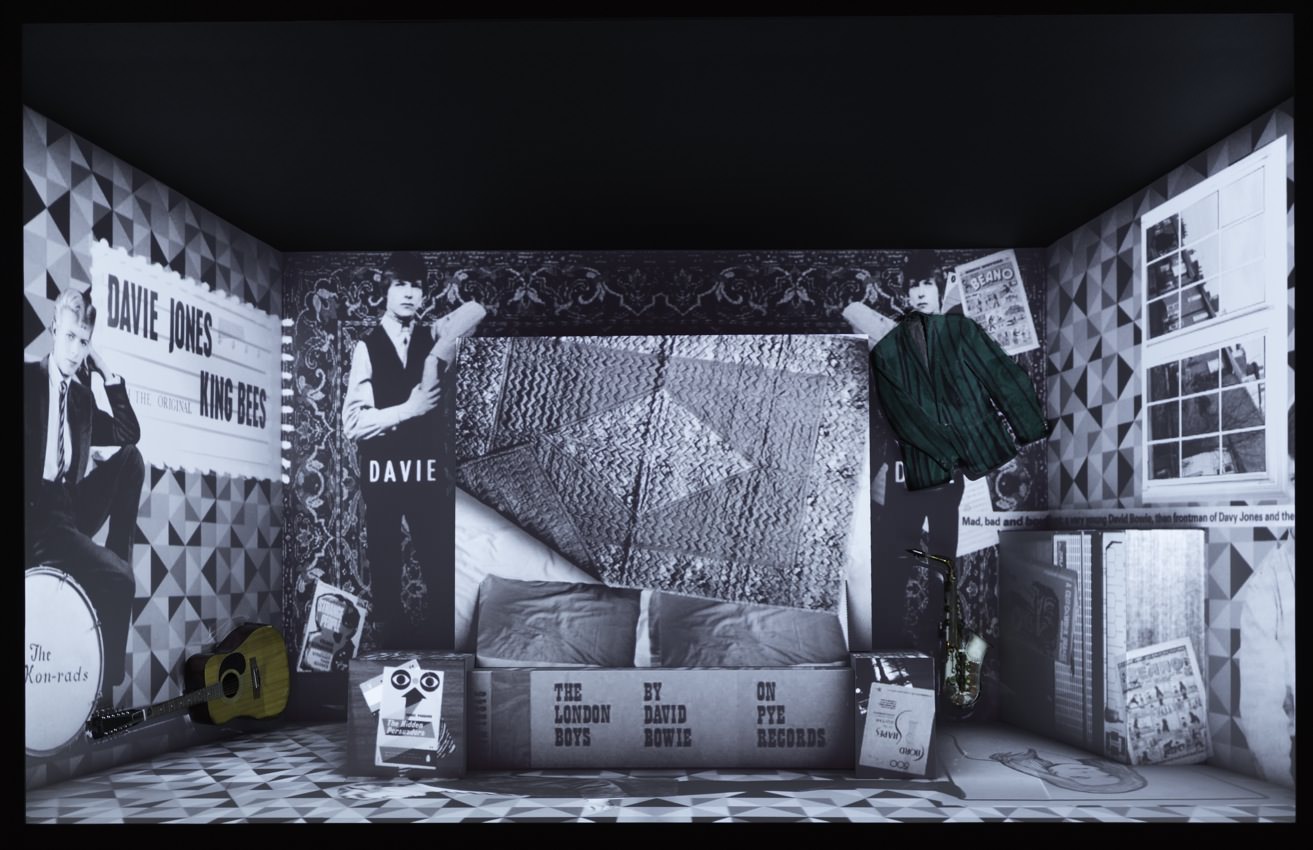 Installation view, David Bowie Is, MCA Chicago. September 23, 2014 – January 4, 2015
Installation view, David Bowie Is, MCA Chicago. September 23, 2014 – January 4, 2015Photo by Nathan Keay
© The David Bowie Archive
Courtesy of the MCA Chicago
The multi-media installation, with motion detector headphones that automatically play music and interviews with Bowie, related to the chronologically staged exhibition, reveal the evolution of his creative ideas, his control of all aspects of the production from idea to lighting, and his awareness of the overall aesthetic experience for audiences.
Bowie’s obsession with fashion and his collaborations with avant-garde designers is evident in the more than 60 stage outfits on display including Ziggy Stardust bodysuits by Freddie Burretti, Kansai Yamamoto’s flamboyant designs for the Aladdin Sane tour, and the Union Jack coat by Bowie and Alexander McQueen for the Earthling album cover. Hand sculpted mannequins had to be commissioned to fit Bowie’s 26-inch waist (I was told an outfit even had to be taken out to fit skinny Kate Moss for a magazine cover). From Glam to Pop to Goth Diamond Dogs, to digging into Surrealism, Brechtian theater, mime, West End musicals, German Expressionism, and Japanese Kabuki, Bowie explored it all and brought it back to audiences in the most exciting and unusual ways.
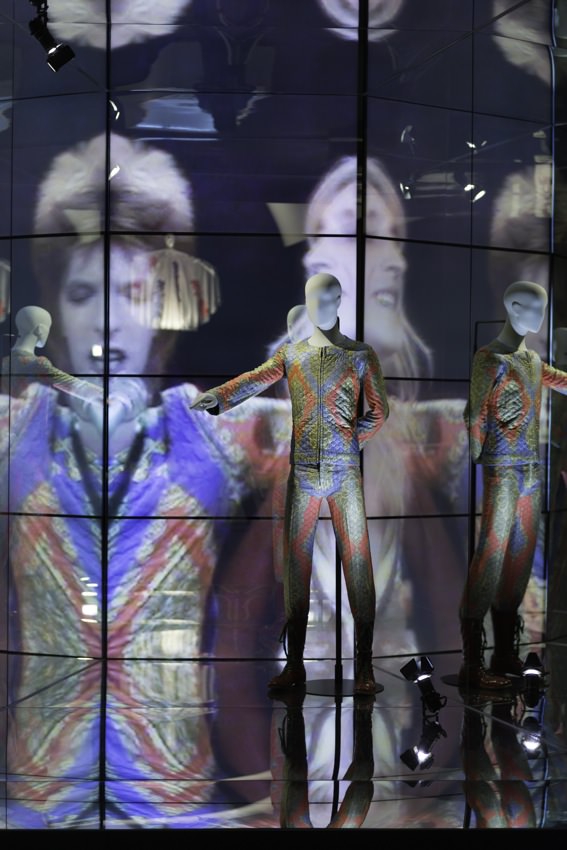 Installation view, David Bowie Is, MCA Chicago. September 23, 2014 – January 4, 2015
Installation view, David Bowie Is, MCA Chicago. September 23, 2014 – January 4, 2015Photo by Nathan Keay
© The David Bowie Archive
Courtesy of the MCA Chicago
Bowie recognized the power of image cultivation and brand early on, something that naturally drew him into Andy Warhol’s orbit, and they shared a talent to navigate both the glamour of the art and entertainment industries and their seedy underbelly. His characters’ transgressive transformations—exploring alienation, identity, and sexual ambiguity—were an influence on artists from Cindy Sherman to Wu Tsang to Lady Gaga.
He also knew that everything has an expiration date, and he made sure not to get locked in to any one thing. Whatever drove him—an insatiable appetite and talent to create, boredom, desire, being awake for too long under the influence (Iggy Pop was a roommate after all)—it culminated to make him one of the most daring, prolific and consistently groundbreaking artists.
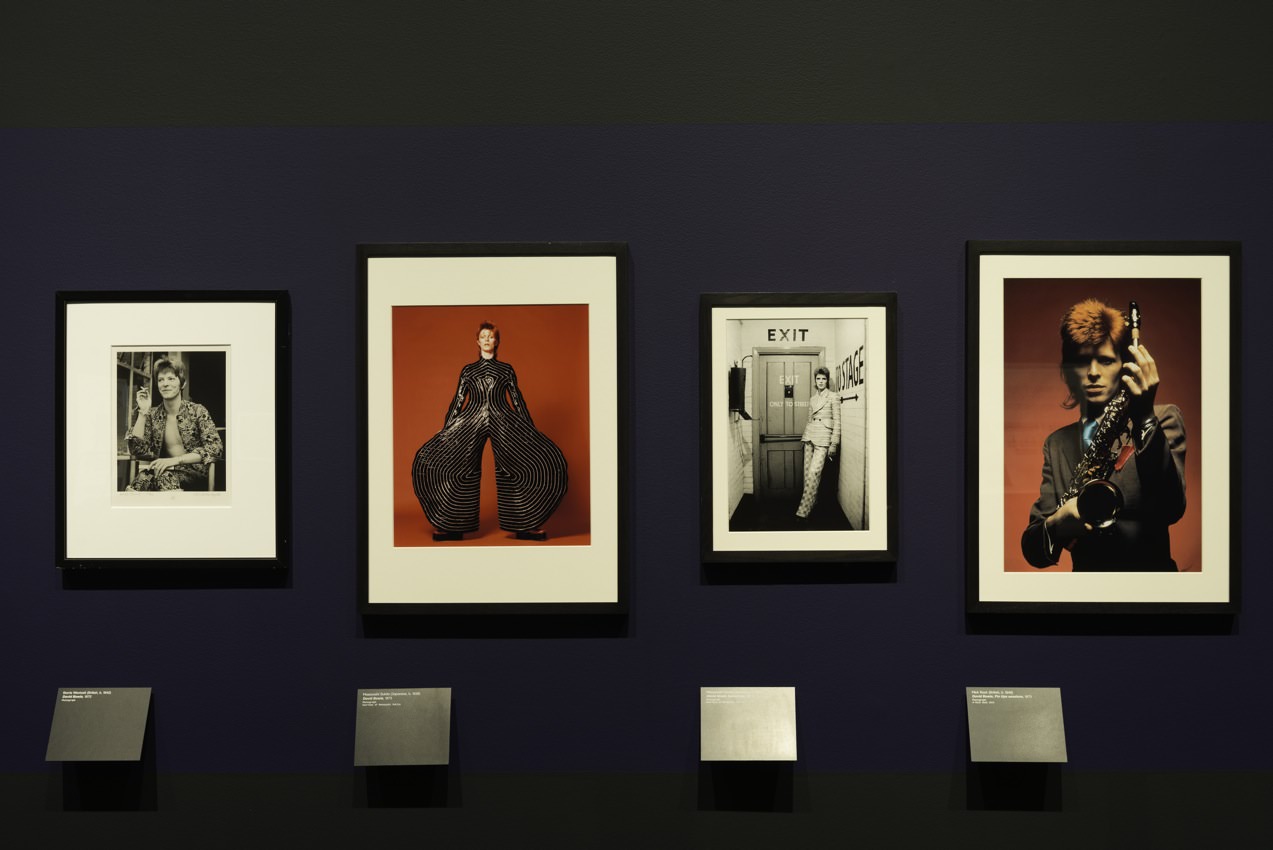 Installation view, David Bowie Is, MCA Chicago. September 23, 2014 – January 4, 2015
Installation view, David Bowie Is, MCA Chicago. September 23, 2014 – January 4, 2015Photo by Nathan Keay
© The David Bowie Archive
Courtesy of the MCA Chicago
It was rather shocking to know that the exhibition was organized without the curators ever talking or meeting Bowie. All objects were culled from Bowie’s own massive archive, a feat itself that the collection survived a tumultuous rock-n-roll lifestyle. The MCA is the only U.S. venue on the international tour, as its chief curator Michael Darling said to stunned and dismayed New Yorkers, “We asked first.”
A consolation prize for those not traveling to the windy city: the film of the exhibition, David Bowie Is Happening Now, opens on 100 screens across the U.S. this week.
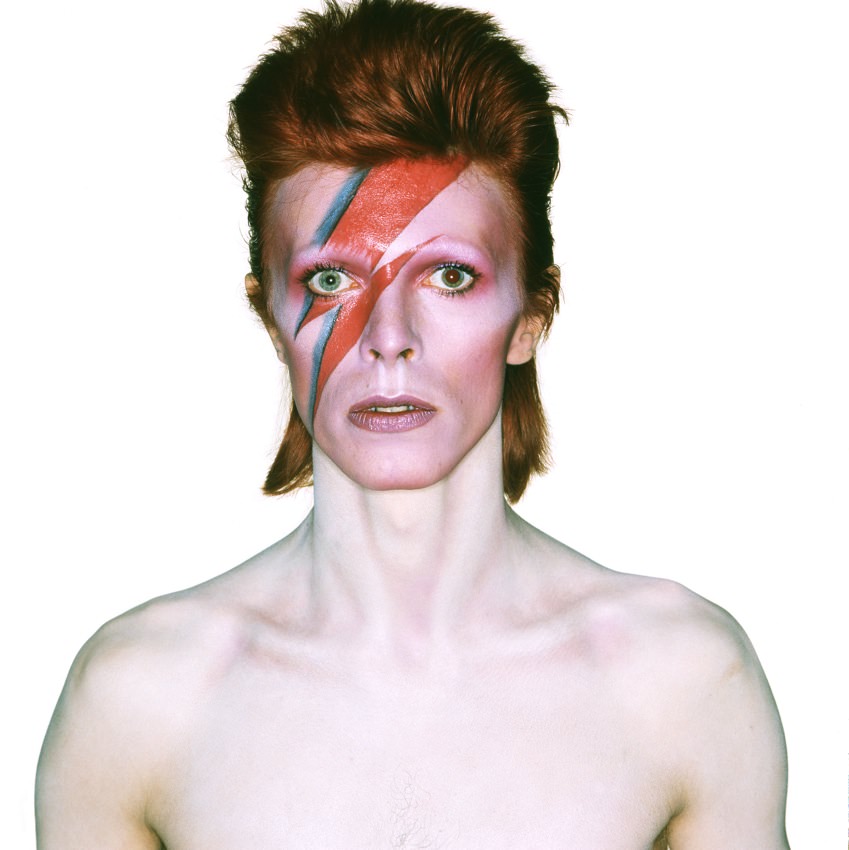 Promotional photograph of David Bowie for Diamond Dogs, 1974
Promotional photograph of David Bowie for Diamond Dogs, 1974Photo by Terry O’Neill
Image © Victoria and Albert Museum







